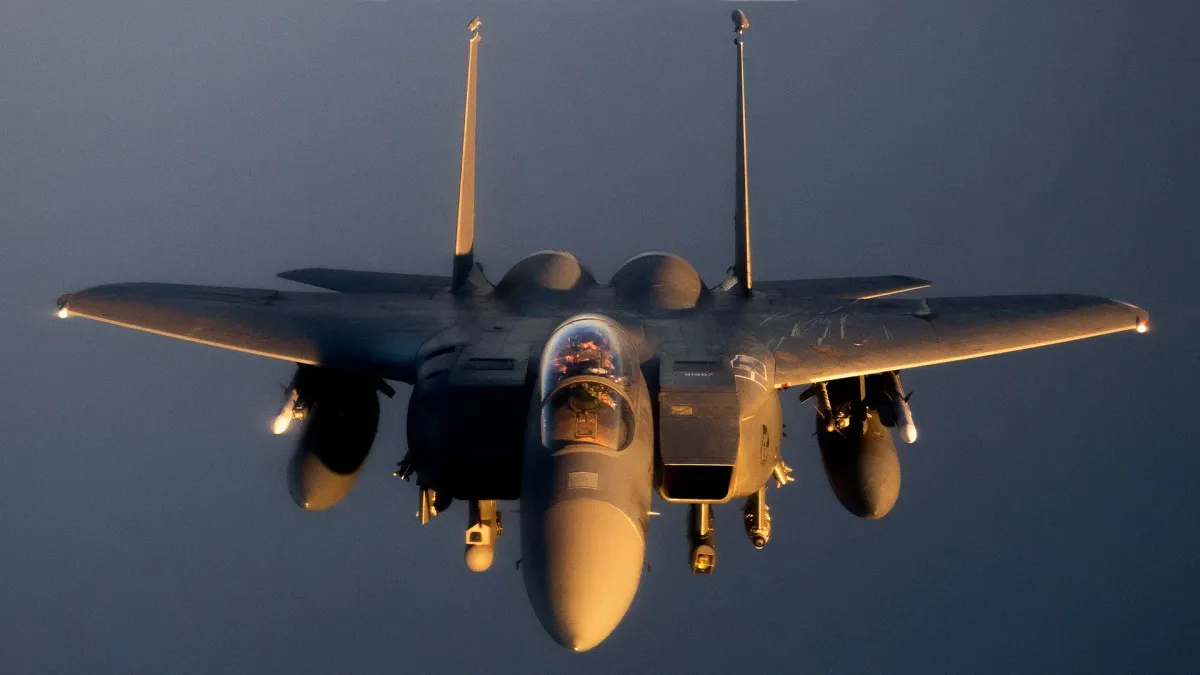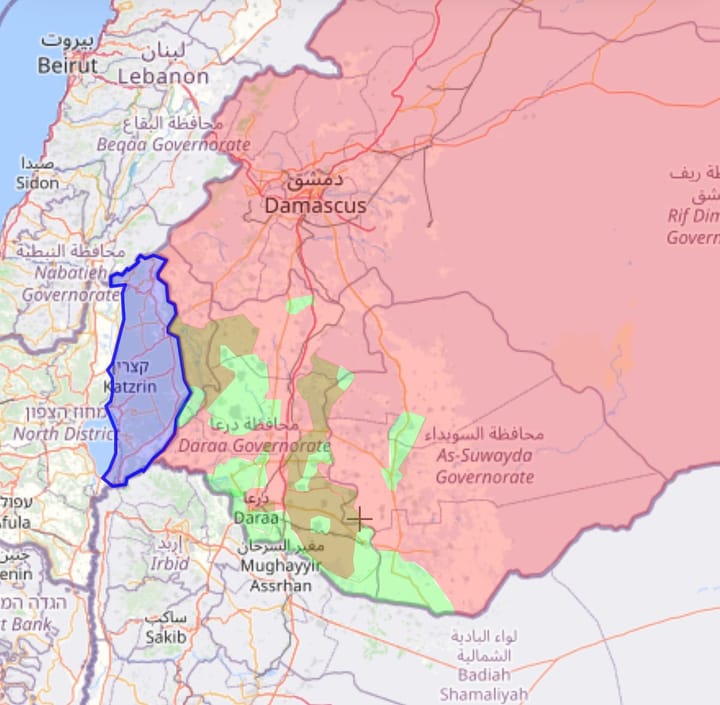Iran’s April Assault on Israel: A Closer Look at the Drone Swarm Tactics, U.S. Pilots Going Winchester, and Defense System Successes
In April 2024, Iran launched over 300 drones and missiles at Israel, testing advanced defenses and U.S. allies. Learn how preplanning, multi-layered systems, and U.S. pilots going Winchester during combat shaped the response and revealed key lessons for modern warfare and counter-drone strategies.

TL;DR
In April 2024, Iran launched its largest coordinated assault on Israel, deploying over 300 drones and missiles in an attack designed to overwhelm Israel’s multi-layered air defenses. The unprecedented scale of the operation highlighted the strategic preplanning by Iran and its allies, pushing Israel's defenses and U.S. allied forces to their limits. U.S. pilots went Winchester—depleting all their munitions during aerial combat. This confrontation showcased the effectiveness of defensive preplanning, the valor of U.S. and Israeli forces, and the rising challenges of drone swarms in modern warfare.
Strategic Preplanning: Setting the Stage for the April Assault
The events of April 2024 did not unfold in a vacuum. The attack was the culmination of months of meticulous preplanning by Iran, reflecting a sophisticated understanding of Israel’s defense systems and the vulnerabilities they sought to exploit.
The Catalyst: Retaliation for the Damascus Strike
On April 1, 2024, an Israeli airstrike targeted the Iranian consulate in Damascus, Syria, following intelligence reports that the facility was being used to transfer advanced weaponry to Hezbollah. The attack killed 16 individuals, including two senior Iranian generals, escalating tensions between the two nations. Tehran vowed a direct and decisive response, signaling a shift from its traditional strategy of using proxies to attack Israel.
Coordination with Regional Allies
Iran leveraged its regional alliances to prepare for the assault. In a show of coordinated strength, groups like Hezbollah, Shia militias in Iraq, and the Houthi movement in Yemen were tasked with logistical and operational roles:
- Hezbollah: Positioned to launch additional strikes from Lebanon if needed.
- Shia Militias in Iraq: Provided staging areas for missile launches.
- Houthi Forces: Supplied long-range drones capable of reaching Israeli airspace.
This level of coordination demonstrated Iran’s ability to organize multi-front operations, complicating defensive responses.
Strategic Objectives
Iran’s primary goal was to overwhelm Israel’s air defenses through sheer volume. By launching hundreds of drones and missiles simultaneously, Tehran aimed to deplete Israel’s interceptors, exposing gaps in its defensive coverage. This strategy also served as a message to Israel’s allies, particularly the U.S., about Iran’s evolving military capabilities.
Iran’s Coordinated Assault: The Tactical Execution
On the night of April 13–14, 2024, Iran launched the assault under the codename “Operation True Promise.” The scale of the attack was unprecedented, involving over 300 aerial threats.
Weaponry Deployed
- Shahed-136 Drones: A staggering 170 of these one-way attack drones were launched, designed to crash into targets and explode on impact. Their low cost and ease of deployment made them ideal for overwhelming defenses.
- Medium-Range Ballistic Missiles: Approximately 120 missiles targeted strategic locations, including airbases and power plants.
- Land-Attack Cruise Missiles: Thirty precision-guided missiles aimed to strike high-value military installations.
Tactical Timing
The attack was meticulously timed to exploit periods of reduced visibility. Launching at night forced Israel’s defensive systems to rely heavily on radar and thermal imaging, which, while effective, were strained by the sheer number of incoming threats.
The Role of Iran’s Allies
While Iran orchestrated the attack, its allies provided critical support. Hezbollah’s radar jamming systems in southern Lebanon attempted to interfere with Israeli missile defenses, while Shia militias in Iraq coordinated the launch of additional drones.
Israel’s Defensive Response: The Power of Preparation
Multi-Layered Defense in Action
Israel’s response was a textbook example of layered air defense. Systems such as the Iron Dome, David’s Sling, and Arrow were activated in tandem, creating overlapping protective zones that intercepted 99% of the incoming threats.
- Iron Dome: Neutralized the majority of Shahed-136 drones before they could reach urban centers.
- David’s Sling: Intercepted medium-range missiles targeting critical infrastructure.
- Arrow-3: Deployed against high-altitude threats, including ballistic missiles.
Allied Integration
Preparation played a key role in Israel’s success. In the days leading up to the attack, General Eric Kurilla, commander of U.S. Central Command, coordinated joint defense drills with the IDF. These exercises simulated high-density attacks, ensuring seamless integration between Israeli and U.S. forces during the actual assault.
U.S. assets, including F-15E Strike Eagles, were pre-positioned at Muwaffaq Salti Air Base in Jordan, enabling rapid deployment to Israeli airspace.
Winchester in the Skies: The Heroic Efforts of U.S. Pilots
Among the most remarkable aspects of the engagement was the performance of U.S. pilots tasked with intercepting kamikaze drones. Their mission was not only to supplement Israel’s air defenses but also to target threats that ground-based systems struggled to engage.
The Tactical Challenge
The F-15E Strike Eagles, equipped with AIM-9 Sidewinders and AIM-120 AMRAAM missiles, faced an unprecedented scenario. Unlike traditional aerial combat, engaging slow, low-flying drones required pilots to rely heavily on their radars to detect and track threats. The sheer number of incoming targets forced crews to fire rapidly, depleting their missile payloads in the process.
Major Benjamin “Irish” Coffey and Captain Lacey “Sonic” Hester epitomized the resolve of these pilots. After firing all their missiles, they were ordered to engage targets using their 20mm Gatling gun, requiring them to close within dangerous proximity to their targets. Despite the high risk, their actions prevented multiple drones from reaching Israeli territory.
"We were trained for high-pressure scenarios, but this pushed us to the limit," Irish later stated. "Going Winchester wasn’t in the playbook—it was something we had to adapt to on the fly."
Recognition of Bravery: Honoring the Heroes
On November 12, 2024, a formal award ceremony was held at RAF Lakenheath, where General James Hecker presented honors to the 494th Fighter Squadron and Fighter Generation Squadron.
Notable Awards
- Silver Stars: Major Coffey and Captain Hester were awarded for their exceptional bravery during the engagement.
- Distinguished Flying Crosses with Valor devices: Recognized pilots who operated under extreme conditions.
- Bronze Stars: Awarded to ground crews who maintained operational readiness during the attack.
A Historic Milestone
Captain Hester’s receipt of the Silver Star marked a significant moment in U.S. military history, as she became the first woman in the Air Force to receive this honor for aerial combat.
Strategic Takeaways and Future Implications
The events of April 2024 revealed critical lessons for modern military strategy:
- Counter-Drone Capabilities: Developing cost-effective solutions like directed-energy weapons and electronic warfare systems is essential for countering drone swarms.
- Preemptive Intelligence: Identifying and disrupting drone production and supply chains could prevent similar large-scale assaults in the future.
- Regional Defense Alliances: Strengthening partnerships between allied nations will be vital for addressing shared security threats.
Conclusion: A Defining Moment in Modern Conflict
The April 2024 assault on Israel was a turning point in Middle Eastern conflict. It showcased the evolving role of drones in warfare, the importance of preplanning and preparation, and the valor of those tasked with defending against overwhelming odds. As the geopolitical landscape continues to shift, the lessons learned from this confrontation will shape military and diplomatic strategies for years to come.


